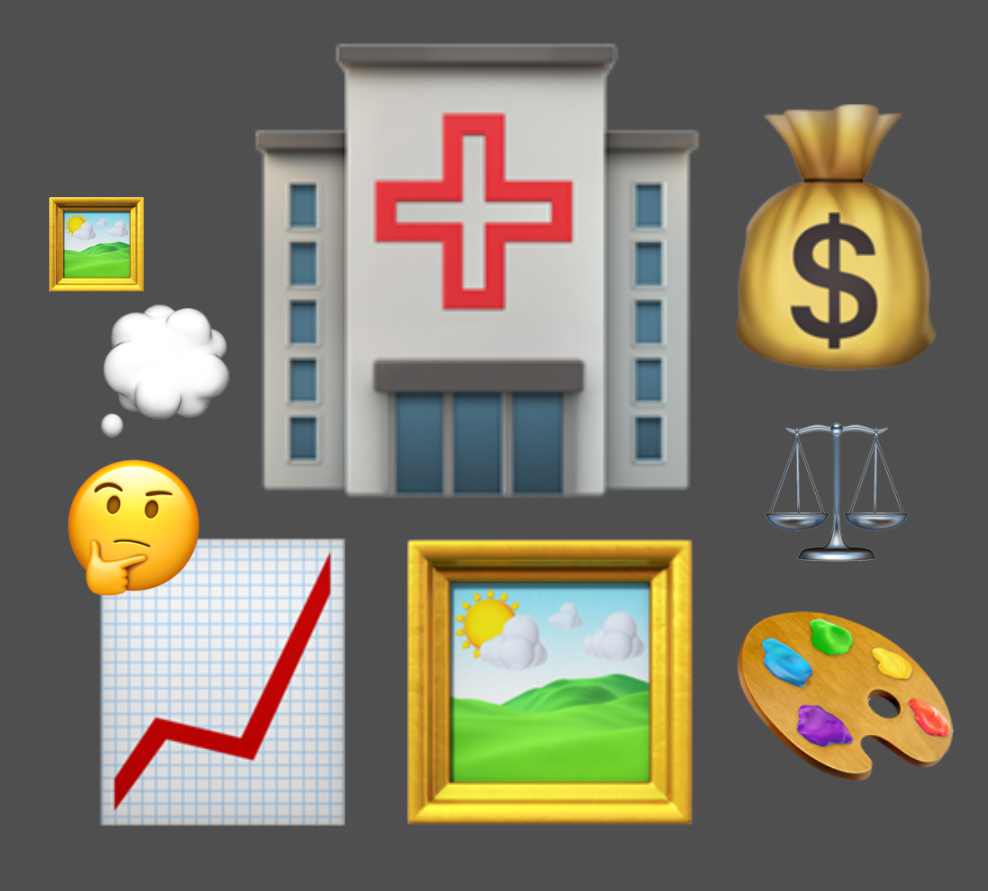
22 Feb Art in Hospitals: An Essential Part of the Budget
“The physical environment is not a mere backdrop for healthcare delivery—it is an integral part of the hospital experience.”
– Hathorn & Nanda, 2008, p. 1, Journal of Organizational Psychology, 2020
Hospitals have a bad rep for being scary, cold places. The reason they are perceived as such is due to the sterility of the interior design (or lack thereof), and fluorescent lighting. When aesthetics are not valued, functionality is the only measure. It makes sense why in this light that hospitals traditionally look as they do.
Turns out a functionality-only (or a “lean space” as we discussed in our last blog post) aesthetic approach is not the best approach to achieve the best possible outcomes in a hospital setting.
Traditionally hospital administrators base their budget from a fiscal perspective. The short-term process of thought would then put the art & decor budget as expendable. New research shows otherwise in a HUGE way.
Researchers studied the three top hospitals in the US over the course of a year to conclude the following Cost/Benefits data. As you can see below the initial cost of the art & installation is greatly overshadowed by the end of year benefits…



You might be asking yourself: “HOW would hospitals get so much benefit from investing in art?”
And from that point we start to unravel the power of art in healing spaces…
What researchers found was that patients interacted with the artwork as a form of positive distraction. By taking the patients mind away from ruminating on their situation, they can allow their body to recover faster not being impeded by the physiological effects of stress, depression, and anxiety.
Their other findings in regards to post-op medication was especially profound, given the US opioid crisis. Patients in the “art group” were *significantly* more likely to switch from stronger to weaker painkillers. This could be another effect of the expedited healing conditions set up by having a positive distraction.
Between reducing the hospital days per patient, and the amount of strong analgesics (painkillers) being administered, the hospital ends up seeing huge returns from their investment in artwork in patients rooms.
In conclusion, the art budget isn’t expendable. It both makes fiscal sense, and has real-world, positive effects for the patients under their care.
As research continues we will see more and more evidence supporting what we artists have been saying forever: Art is powerful!
What if creating “healing spaces” was more a part of our culture? How would that impact our day to day? I’m going to put my money on it would improve our lives drastically, if for nothing else we would have more art in the world.
In conclusion: Art is good for hospitals.
In our next blog post we will look into how art is good for patients. Stay tuned!


